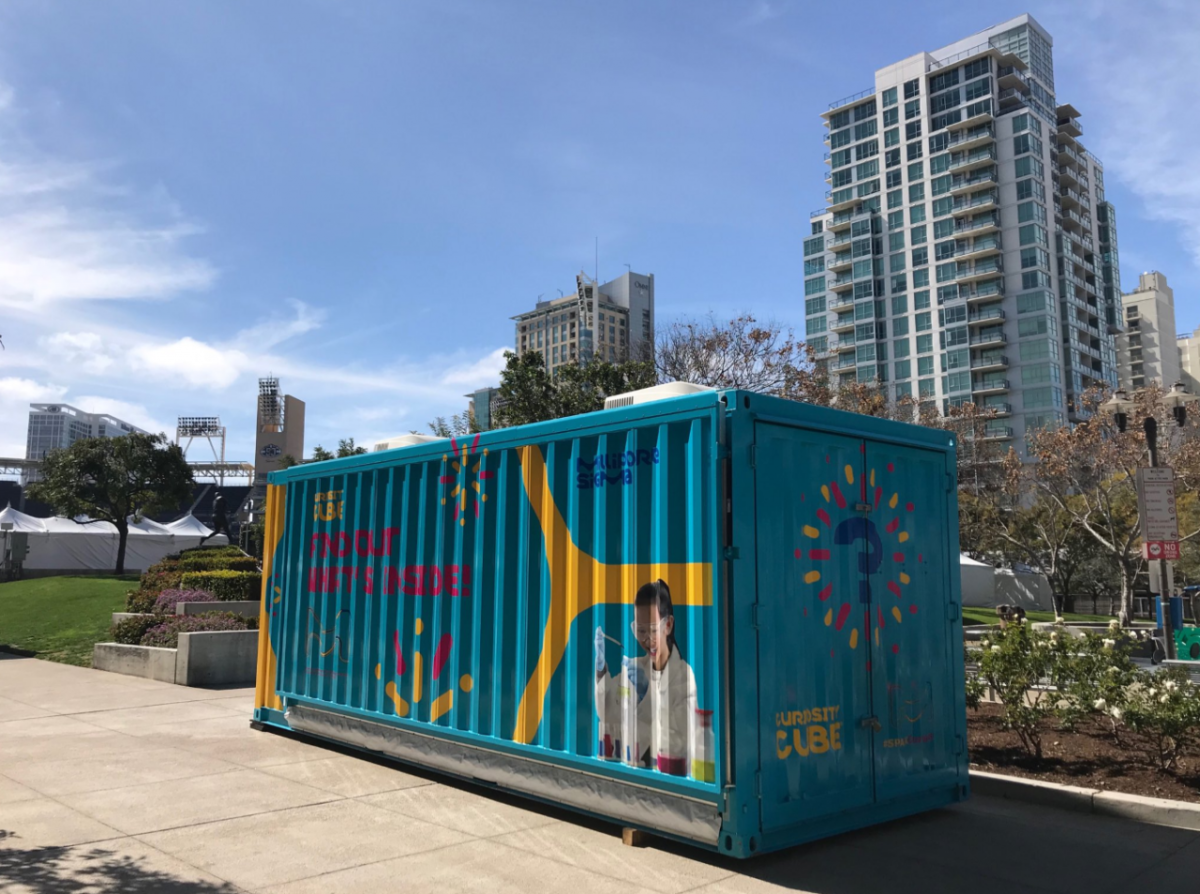Increasing STEM Access and Changing Perceptions
by Jeffrey Whitford

Sometimes ideas are hatched and shared in the most fortuitous places — and you don’t even know it. It all began when one of my team members and I were at our first Global Communicators Conference in Wiesbaden, Germany, following the acquisition of the company that we had been working for. It was an awe-inspiring experience, mainly because our new company — Merck KGaA, Darmstadt, Germany — was launching a completely new brand and this was one of the first internal events to showcase the new look, feel and messaging. In light of this new approach, we formed teams to come up with new ideas that supported our new brand. Daniel Sherling, the auteur of this novel concept, shared his concept of creating a mobile science lab out of a shipping container that could address the need we saw around access to high-quality and technology-driven science experiences for children, especially in lower socioeconomic areas. Per the usual, everyone just nodded and moved on. I didn’t think about it again until the opportunity arose, and that fleeting idea started the journey to reality.
What I didn’t (and still am not fully able to) appreciate is the herculean effort that goes into launching and sustaining an effort like this. We’ve spent years refining our approach to science education community outreach and engagement, so one would think we just had to bottle that up, put it in a shipping container and send it out into the world. If only.
Let’s start with curriculum. As the son of an educator, I have an appreciation for curriculum development that has since significantly deepened. We’re setting out to not only ensure rigor, but also inspire students to see science as more than a boring subject or something that they’re not good at. The solution, however, is not just the whiz-bang alone, but rather marrying it with a healthy dose of lasting information that actually creates a takeaway and lands the concepts we’re trying to teach students — the core, fundamental aspects of chemistry, biology and even engineering. We essentially had to take our Curiosity Labs™ format and try to do what was done in 50 minutes, in three minutes — while still ensuring that we landed those concepts.
I’ve become far more acute at listening to our teams talk about their experiences — not only at schools, but also at public events where literally thousands of children stream through the Curiosity Cube® mobile science lab on a daily basis. The phrase “this isn’t going to work at a public event” is uttered frequently, and the team shields me from a lot of the nitty gritty details that they work through. The challenge they face is fascinating, and they rise to the occasion each time.
Regardless of the delivery method, though, the intent is still the same — how do we ensure that students aren’t just doing something cool, but that we’re also packing information into the experience and modeling behaviors that change their perspective on what they can do, their interest in science and the realization that a STEM (science, technology, engineering and math) career could be within reach?
Another topic that we address with the Curiosity Cube® mobile science lab is access to high-quality educational experiences. Since our own employees volunteer and lead the hands-on experiments inside, our reach is currently limited to the communities in and around our physical locations in the United States and Canada. However, we see an opportunity to engage schools, equally, across the socioeconomic landscape. In 2019, 95 percent of the schools that we will visit are classified as Title 1 schools. This focus on access is a unique opportunity that the mobility of our Curiosity Cube® mobile science lab provides — eliminating the need for an in-house science lab to execute experiments. We find that the norm is bookwork, worksheets or videos. While these are core components of education, there is, without question, nothing like being able to have the experience of seeing a chemical reaction or your own DNA with your very own eyes.
As we continue to advance discussions around access, our goal is not just limited to one geographical region. We’re currently investigating how we can expand the presence of the Curiosity Cube® mobile science lab by taking it international. Our fully realized vision takes this idea to Asia, Europe, Africa and South America — where our content is tailored to each region and is global, yet localized, at the same time. We’re also thinking about different delivery methodologies so that we’re not restricted to just bringing this experience to where we have offices and our employee volunteers.
While people around the world are making huge strides in solving some of the world’s toughest problems, we need the next generation of problem solvers to be ready to go — using their curiosity that has hopefully been stoked by an amazing experience early in life. One belief that we’ve always held, and will continue to hold, is that you never know if the person who is going to cure cancer, or find a breakthrough treatment, is just in need of an experience that sparks their imagination just as it does a child. It’s why we continue to do what we do, and why we stick with and champion those ideas and people who are creating transformational experiences — even if they come from the most unexpected places.
Jeffrey Whitford is head of global corporate responsibility and branding for MilliporeSigma.

